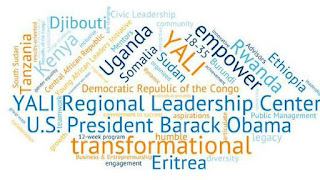Book Review: Dance of the Jakaranda
When you see the ‘k’ in Jakaranda, you really want to
correct it. Who writes ‘Jacaranda’ that way? Well, Peter Kimani does, and it is
the name he chose for his fictional nightclub. (Ha! Had to spoil it for you this
early! Perhaps I should not have mentioned that. Sorry Peter, and Bola, I just
couldn’t resist!).
The book is not about dancing.
Yes, there’s plenty of that vividly described, you can feel
the party mood, smell the sweat of the revellers, the aroma of the nyamachoma and even the stench of the
urinal, and trigger whatever sense is triggered when you see, smell, and drink alcohol.
The reason I loved the book, is the meticulous research that
went into it. All great works of historical fiction need thorough research. In
Kenya, with the political identities defined or determined by ethnic
identities, and the question of identity being pretty much the determinant of everything
in an individual’s life, more so in political participation and public service,
such research was an invaluable addition to this book.
Peter tells the story of the British-built Kenyan railway,
the history of colonialism in Kenya, and its enduring legacy, and deftly weaves
in the story of the politics of independence in Kenya. The historical
coincidence of what he describes in the book, with the happenings of
present-day Kenya blew me away.
Historical coincidence
Picture this, in the book, a popular main character born and
raised in Kenya pinpointed for “deportation”. That was a government tactic that
has been deployed since Kenya got independence in 1963, as a way to “manage”
government critics with immense international clout. It was painfully familiar
when the government in 2017, deported
a Kenyan citizen, Miguna Miguna for questioning the integrity of elections.
There is also a paternity dispute in the book that
metaphorically mirrors dispute between Uhuru Kenyatta and Raila Odinga who’d
been involved in a
dispute over who is the president of Kenya following a sham election. The
launch of the standard-gauge railway built alongside the colonial railway and
financed by the Chinese, a rising imperial power taking over the world, lording
Kenya with debts and mistreating citizens, is also another coincidence – the
existing railway was built by Britain.
For the rest of the coincidence, including the
politically-motivated killings, the corruption …you will have to find out for
yourself.
“I try to be faithful to history without being enslaved by
it!” he told me, in one of the many train rides we took in the winter nights of
London.
The memorable thing is that Peter Kimani writes the story of
Kenya, through the eyes of an Indian. He told me, and many others during his book
tour in London.
“I was curious about this evolution in terms of identity and
belonging and I thought that an Indian character as opposed to an African or a
white one, would be a fitting metaphor of this complexity and ambiguity of
racial and ethnic identity” said Kimani.
His answer illuminated his thinking about the choice of
character, because of the class system that had the whites at the top, the
Asians in the middle, the Arabs somewhere in there, and the Africans at the
bottom, and how that played out when the country achieved independence, and the
African (elite) got to the top. Today, we have some Africans on top, and the
rest of the population, including whites wherever they fit, depending on their
economic power and self-esteem. The segregation though still
persists.
Love
If you don’t love politics, you can break down this book as
a love story. Actually, that is how Kimani says he conceived it. He wanted to
tell a good love story, of an Indian boy falling in love with mixed-race woman,
born out of a white father and a Maasai girl. But even in that conception and
delivery, there’s the tragic story of rape, betrayal and hypocrisy!
If you are an adolescent planning to fall in love, the book
will also speak to you about the tactics to use, the potential push-back from
the families, especially if they are from a different cultural background, and
also the importance of culture in relationships.
Did I say it was a rich book?
Yes it is!
The book is written in a very accessible language, with
history recounted through the eyes of the present. I think that was Kimani’s
way of recognizing that the demography he was writing for needs to be in a
position to read and enjoy the book. He executes that superbly!
There’s a statement that Kimani made in London: “There’s a
past that continues to interfere with the present, and so our future can only
be bleak!”
That was a poignant statement. Loaded. I could not make out
whether he was talking about the colonial legacy and the West’s knack to
interfere with the elections; or whether it was about Uhuru Kenyatta and his
family history of corruption.
Whatever it is, I keep thinking about the passages in the book,
and to that statement, and to the way he weaved the story. There’s intellect in
there. There’s talent. And then there’s literature to it. I appreciate all of
it!


Comments
Post a Comment